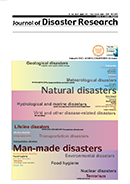Volume 16, Issue 8
Displaying 1-10 of 10 articles from this issue
- |<
- <
- 1
- >
- >|
Regular Papers
-
Article type: Survey Report
2021Volume 16Issue 8 Pages 1161-1178
Published: December 01, 2021
Released on J-STAGE: December 01, 2021
Download PDF (458K) -
Article type: Paper
2021Volume 16Issue 8 Pages 1179-1196
Published: December 01, 2021
Released on J-STAGE: December 01, 2021
Download PDF (817K) -
Article type: Paper
2021Volume 16Issue 8 Pages 1197-1206
Published: December 01, 2021
Released on J-STAGE: December 01, 2021
Download PDF (349K) -
Article type: Paper
2021Volume 16Issue 8 Pages 1207-1233
Published: December 01, 2021
Released on J-STAGE: December 01, 2021
Download PDF (538K) -
Article type: Survey Report
2021Volume 16Issue 8 Pages 1234-1242
Published: December 01, 2021
Released on J-STAGE: December 01, 2021
Download PDF (337K) -
Article type: Paper
2021Volume 16Issue 8 Pages 1243-1256
Published: December 01, 2021
Released on J-STAGE: December 01, 2021
Download PDF (415K) -
Article type: Survey Report
2021Volume 16Issue 8 Pages 1257-1264
Published: December 01, 2021
Released on J-STAGE: December 01, 2021
Download PDF (674K) -
Article type: Paper
2021Volume 16Issue 8 Pages 1265-1273
Published: December 01, 2021
Released on J-STAGE: December 01, 2021
Download PDF (489K) -
Article type: Paper
2021Volume 16Issue 8 Pages 1274-1285
Published: December 01, 2021
Released on J-STAGE: December 01, 2021
Download PDF (234K) -
Article type: Paper
2021Volume 16Issue 8 Pages 1286-1297
Published: December 01, 2021
Released on J-STAGE: December 01, 2021
Download PDF (815K)
- |<
- <
- 1
- >
- >|
